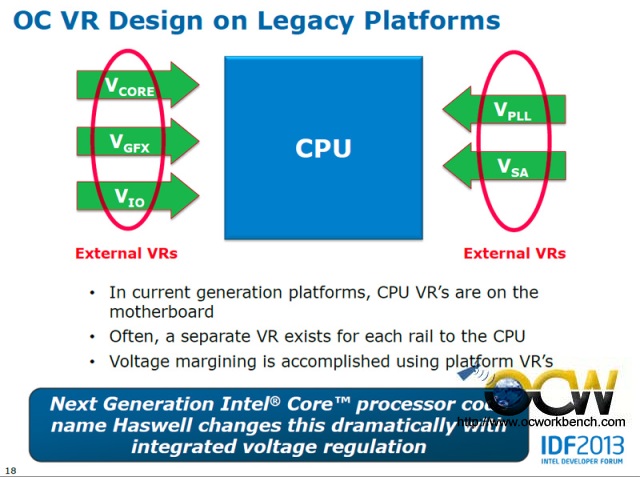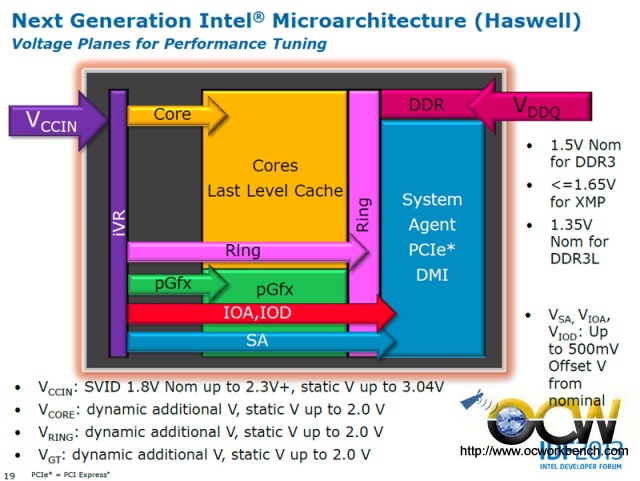Overclocking enthusiasts always look for the fastest processors on earth to overclock. This is especially the case for LN2 players. This is because they usually apply insane voltages to the processor and peripheral. Current designs have voltage regulators on board. With the new Intel Haswell, the design has a lot of things integrated into the processor. From memory controller to graphics and now the voltage regulator. So, what do you think will happen in the future. Will there be more RMAs of the processors as compared to current generations (mostly RMA of motherboards) ?
Join the poll at http://forums.ocworkbench.com/showthread.php?t=147464



This is insane. Voltage regulators have no place to be inside of the CPU… That will make the DIE of the CPU very overheating and distorting the other components oboard operation. Also that create another problem. The voltage regulation coils and caps have to be as close, to the voltage regulators, as possible.
If anyone put them into the CPU, then these two components will need to be places as close to the CPU, as possible. I did not want to see design, that come up with usable solution for this, but clearly this is going to be a problem. The coild aren’t getting smaller and the caps are need more that ever to make the voltage nice and clean.
The lesser the voltage is, for the CPU, the cleaner it must be. Spikes, that for example NetBurst architecture can tolerate, will cause crash in todays CPU’s. So if this move will not be canceled, then we are all in deep troubles…
Not only overclocking will be almost impossible, but also I see there a couple of other problems that would require some solutions, that are unnecessary in the first place.
Overal – Intel lust for control eat up another piece of hardware of witch it previously did not have any control. That is sad news.